TechRadar Verdict
The Pixel 9 Pro is here, and Pixel fans can rejoice at the premium new look and incredible feel. Google’s AI can be fun and even useful, if you don’t think too hard about it, with camera tricks that add you to photos and a live AI voice that you can converse with. Don’t make the Pixel 9 Pro think too hard, though, because the Google Tensor G4 chipset inside can barely keep up, leaving the next seven years of updates in question. But don’t worry about that for now; just have fun taking the best photos and videos, chatting to the AI, and peering into the future – the Pixel 9 Pro leaves you wondering what’s next.
Pros
- +
Fantastic Pixel redesign with premium materials and finish
- +
Excellent cameras rival the best camera phones
- +
AI tricks are unique and creative without crossing lines
Cons
- -
Performance lags significantly behind other flagship phones
- -
Some AI tricks feel a bit fake when you use them
- -
Price is high compared to high-performance rivals
Why you can trust TechRadar
Google Pixel 9 Pro: Two-minute review

The Google Pixel 9 Pro is the first flagship AI phone, but what does that mean? It means that AI isn’t just powering cool editing tools in Photos or writing new messages in WhatsApp; AI is everywhere. It’s the heart, and the recurring theme, of the Pixel 9 Pro. So what is it like to use the first AI flagship phone every day? It’s kind of like living next to Disney World.
Let’s start with the design of the Pixel 9 Pro, which is just as polished and thoughtful as an expensive theme park. No detail is overlooked. This is the first phone I think I’ve seen with a SIM card lid that’s curved to match the corner of the phone. With its smoothly polished edges and premium materials, the Pixel 9 Pro feels better and more refined in my hand than any other phone I own – better than the iPhone 15 Pro Max or Galaxy S24 Ultra.
Now let’s go on some rides. When the Pixel 9 Pro is great, it’s really thrilling. The new multi-modal Google Gemini AI can look at a photo and answer questions based on what it sees. Gemini Live gives you a conversational assistant that helps you brainstorm and create ideas in the most natural way you’ve experienced with a computer. The new AI photography features create exciting, creative, and nearly flawless photos, whether real or imaginary.
Sometimes, it’s all a bit much. Everywhere you turn there’s a new AI feature asking to help. Open Google Keep to make a shopping list and Gemini will ask if it can help. Open Gmail to read your email, and Gemini will ask if it can summarize for you. Make a phone call and Gemini will ask if it can take notes.
Once you’ve purchased a ticket to the Google Pixel 9 Pro’s magic AI kingdom, there’s no escaping it. In fact, it’s only going to get bigger.
I don’t want this review to seem negative, because just like a big theme park the Google Pixel 9 Pro is incredibly well-designed, with thoughtful touches throughout, while remaining simple enough that a child or a harried parent could navigate through its menus.
Sign up for breaking news, reviews, opinion, top tech deals, and more.
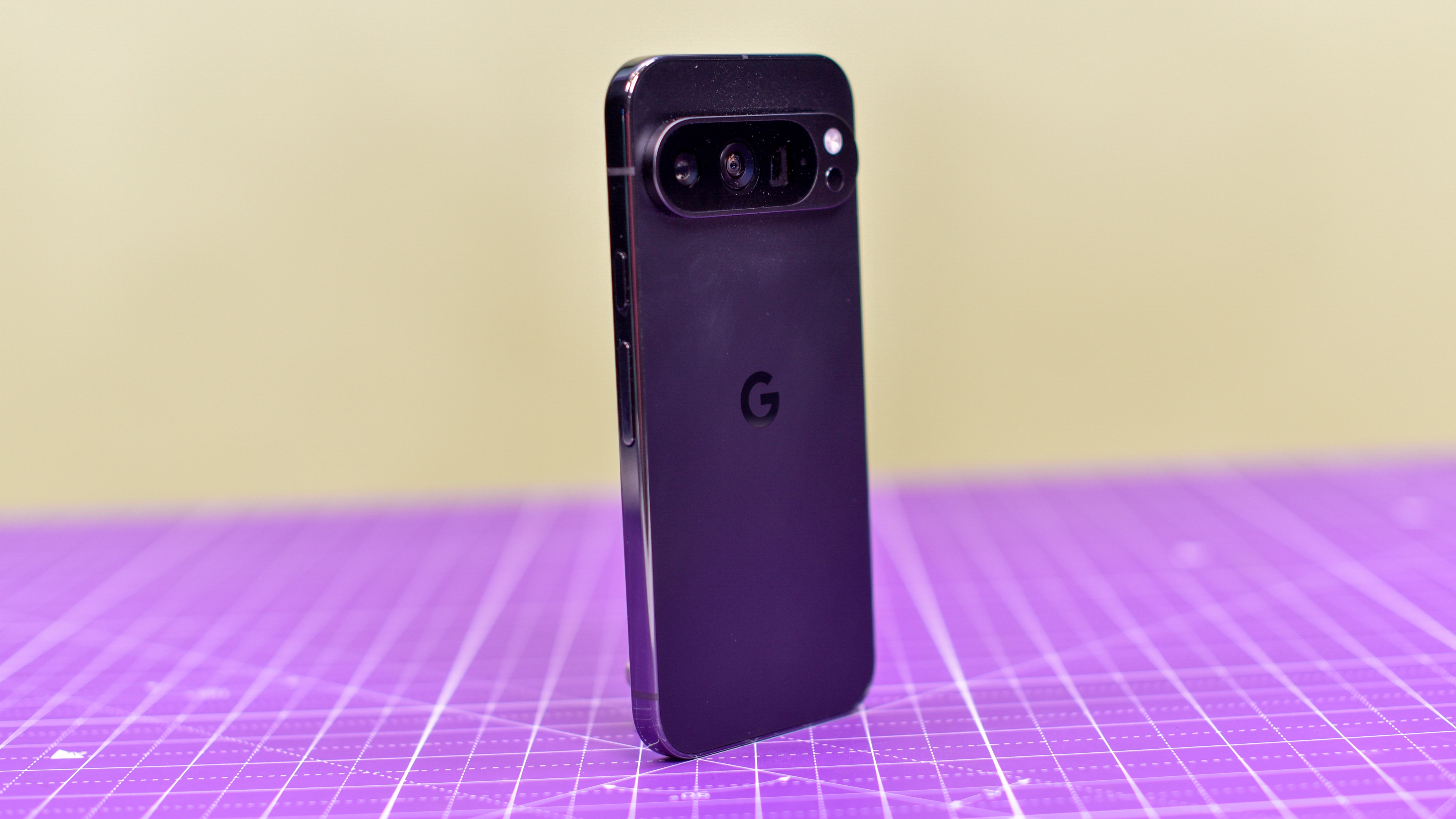
Like that theme park, you might also wonder at the high cost of admission. The Pixel 9 Pro starts at $999 / £999 / AU $1,699 with a paltry 128GB of storage, which is like traveling to Disney World with only $128 in your wallet. You can manage, but only if you keep all of your stuff somewhere else, like Google’s cloud.
Thankfully, Google is offering a year of Google One AI Premium with your Pixel 9 Pro, and that includes 2TB of cloud storage, in addition to Gemini Advanced access. That’s a very big deal. In fact, if you were going to consider a Pixel 9 instead of a Pixel 9 Pro, and you were planning on paying for a year of the service, it would cost less to buy the Pixel 9 Pro and get the season pass for a year of One AI Premium from Google.
Even when the AI features on the Pixel 9 Pro feel fake, they still feel fun. I can add myself to a group photo using Add Me in the camera, even though I wasn’t part of the group. Using Pixel Studio, I made a movie poster for an inside joke between me and my friends. Using Gemini with Google’s keyboard (er, Gboard), I turned mundane text messages into Shakespeare… ish.
Is it all real? It’s real cool, that’s for sure. It’s not always realistic, and sometimes it offers embarrassing suggestions, but isn’t that the point of having fun at an amusement park?! We all know it’s a bit fake, so maybe I should just stop complaining about realism and have a good time.
That doesn’t mean the Pixel 9 Pro is perfect. The phone has heat issues, which is worrisome considering the Pixel line’s questionable history with overheating. My Pixel 9 Pro warned me that it was overheating on a fairly mild, sunny day, and it got so hot while taking pictures that it insisted on reducing my photo resolution.
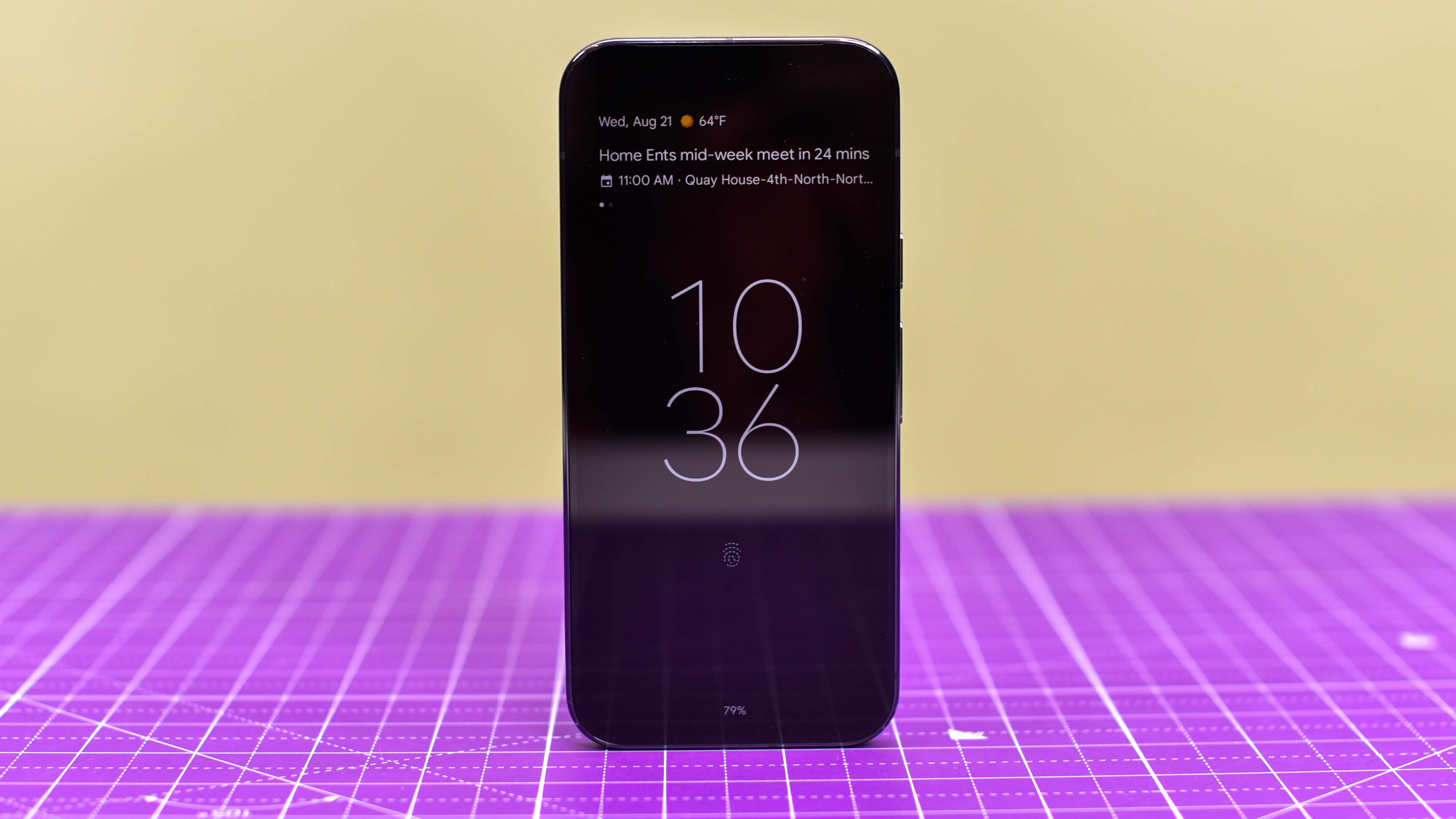
I was also left unimpressed by the meager performance of the Tensor G4 chipset. Like me at the end of a long day of rollercoasters and cotton candy, the Tensor G4 could be sluggish and unresponsive, and I don’t just mean the AI features. Running a bunch of apps all at once could cause delays longer than the line for Splash… okay, you get it.
That said, the Pixel 9 Pro is undeniably exciting. It’s a great-looking phone that I was happy to pick up every morning, and it takes such reliably great photos that I’m thrilled to take it with me on my travels.
The best AI features are so useful that I sometimes struggle to remember the old way of doing things. I won’t ever use another recording device for meetings or interviews, not while I have the Pixel Recorder app. I’ve given up on annoying recipe websites in favor of the goodies Gemini Advanced helps me bake.
Even better, some of the newest features on the Pixel 9 Pro feel like more than just features; they feel like a glimpse at the future. When I talk to Gemini Live and get interesting advice, or when I see the potential of the new Screenshots app, I feel like AI could create an entirely new mobile experience some day. Not yet, but some day.
Google Pixel 9 Pro review: Price and availability
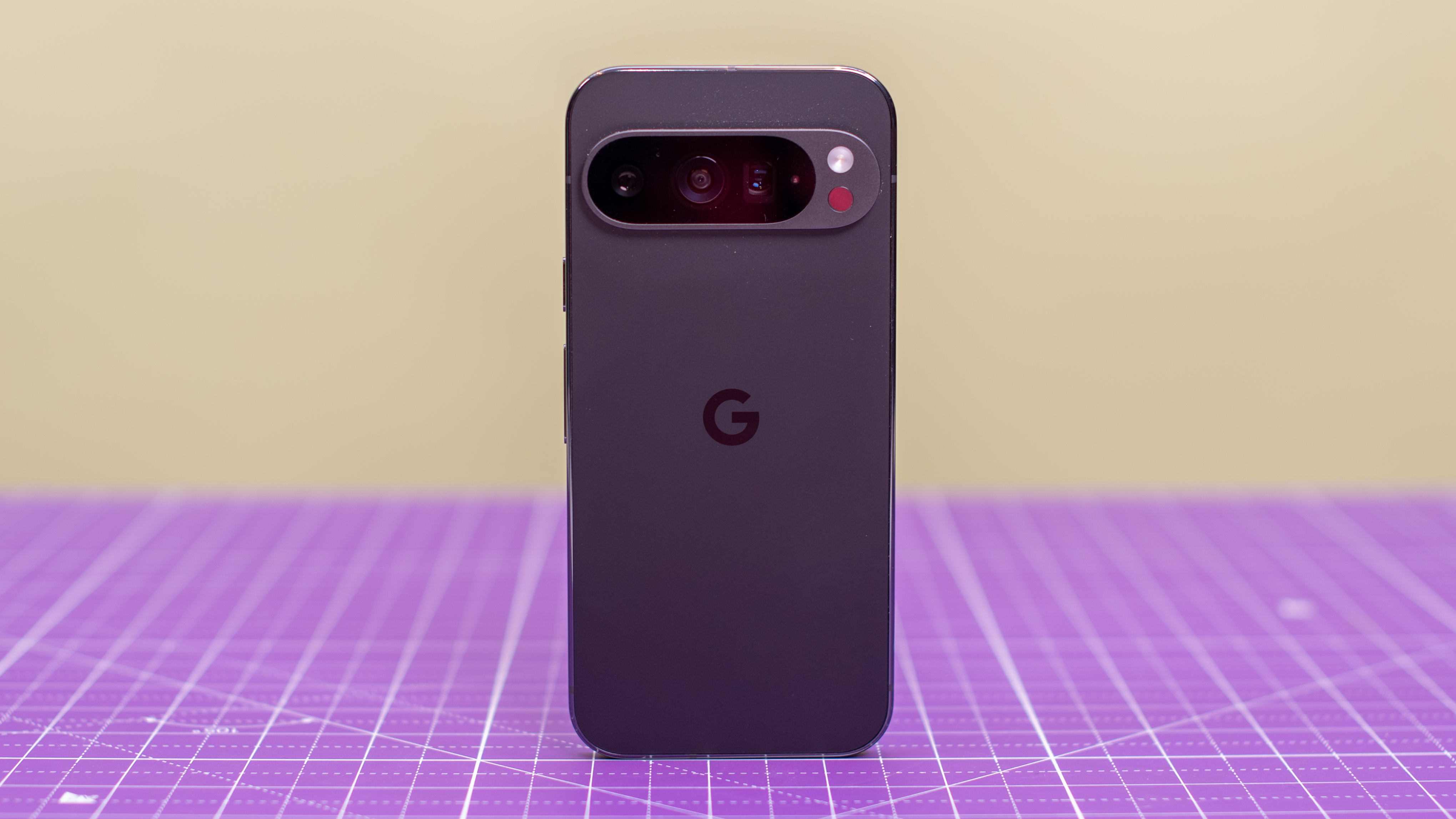
- Costs $999 / £999 / AU $1,699 for 128GB of storage
- Rose Quartz only available in 256GB version or below in some regions
The Google Pixel 9 Pro starts at $999 / £999 / AU$1,699 for 128GB of storage, and you should consider more storage if you plan on recording a lot of video. Google is offering Pixel 9 Pro and Pro XL buyers a year of Google One AI Premium, which includes 2TB of cloud storage and Gemini Advanced privileges (a necessary subscription for Gemini Live), a great deal that should have been extended to Pixel 9 buyers as well.
The Pixel 9 Pro comes in a nice array of natural colors, including a delightful pink Rose Quartz, a surprisingly appealing gray Hazel, the refined off-white Porcelain, and the boring old black Obsidian that I got as my review sample. The black is nice, if you like black or need a business look, but I’m partial to more color and brightness.
Oddly, you may find that the Rose Quartz model is only available with 256GB of storage or less. The 1TB model is only available in the US, and it only comes in boring Obsidian.
If you’re balking at the price, I’d note that last year’s Pixel 8 Pro launched in October, and by November it was already on sale with a significant discount. I suspect we’ll also see discounts on the Pixel 9 Pro, but probably not until November.
I don’t think the phone is worth the asking price. The design is excellent, and it has the durability, and longevity with software updates, to make it last; I just don’t think the poor performance and possible heat problems justify Google charging pretty much the same price as the Apple iPhone 15 Pro. That said, if you get a good deal, like a free storage upgrade or a bundle with Pixel Buds Pro, it’s a much easier decision, and I’d then recommend the Pixel 9 Pro without hesitation.
- Value score: 4/5
| Storage | US Price | UK Price | AU Price |
| 128GB | $999 | £999 | AU $1,699 |
| 256GB | $1,099 | £1,099 | AU $1,849 |
| 512GB | $1,219 | £1,219 | AU $2,049 |
| 1TB | $1,449 | Row 4 - Cell 2 | Row 4 - Cell 3 |
Google Pixel 9 Pro review: Specs
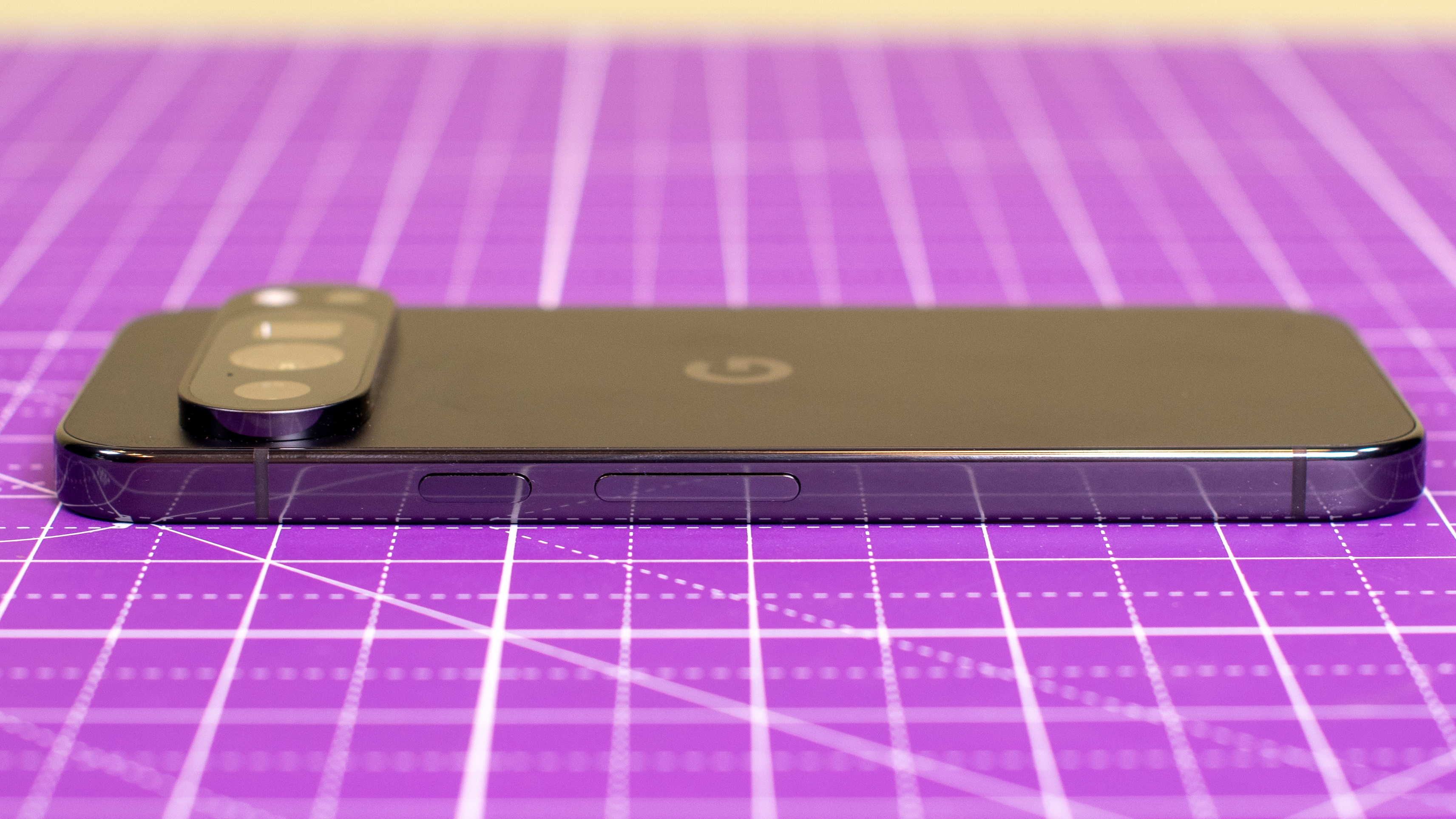
In some ways the Pixel 9 Pro is a real specifications winner, but in one major way it falls behind. In terms of the Super Actua display and the new camera setup, the Pixel 9 Pro is a leader. It has the best display around, and the cameras are superlative. It also includes 16GB of RAM, which is a massive dose of memory for any phone that isn’t made for hardcore gamers.
The Tensor G4 chipset is the bottleneck. We know the processing cores that Google used in building the Tensor G4, and the low-level performance isn’t surprising. This chip is barely fast enough to compete with an iPhone 12 from 2020, let alone a Galaxy S24 or iPhone 15 Pro. And that’s not just on paper; you can feel the sluggishness when you multitask with this phone.
The Pixel 9 Pro supposedly can support 45W charging, but we have questions about this claim – our power meters never registered more than 25W when the Pixel 9 Pro was charging. The charging times match Google’s claims, but I wonder if the phone is really taking advantage of the faster charging.
| Row 0 - Cell 1 | |
| Dimensions: | 152.8 x 72 x 8.5mm |
| Weight: | 199g |
| Display: | 6.3-inch Super Actua display |
| Resolution: | 1280 x 2856 |
| Refresh rate: | 1-120Hz |
| Peak brightness: | 3,000 nits |
| CPU: | Google Tensor G4 |
| RAM: | 16GB |
| Storage: | 128GB / 256GB / 512GB / 1TB |
| OS: | Android 14 |
| Cameras: | 50MP wide; 48MP Ultrawide; 48MP 5X zoom |
| Selfie Camera: | 42MP |
| Battery: | 4,700mAh |
| Charging: | 45W |
| Colors: | Obsidian, Porcelain, Rose Quartz, Hazel |
Google Pixel 9 Pro review: Design
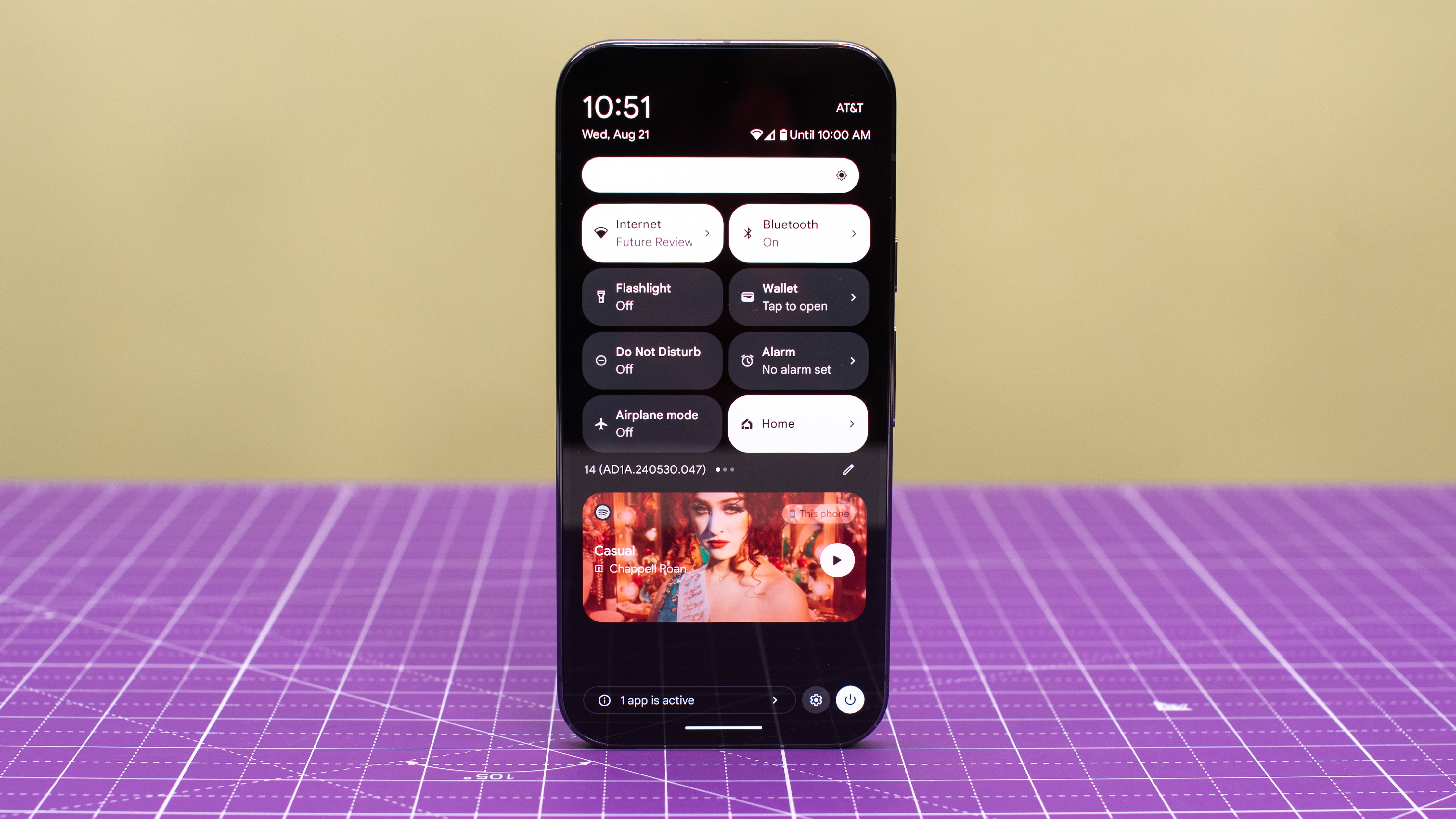
- Biggest Pixel redesign since 2020’s Pixel 6
- Fantastic materials and finish feel more premium than ever
The first thing I do with a gorgeous phone is flip it over in my hand. I hold it sideways, and flip the phone again and again to feel any grooves or unpleasant edges, and sharp corners where my skin catches. The Pixel 9 Pro is the smoothest, most polished phone I’ve felt in years. It feels more pleasant to grip than my iPhone 15 Pro.
The Pixel 9 Pro doesn’t have the uniquely shimmering depth of the Galaxy S24 Ultra, but it matches Samsung’s attention to material details, with great color options that fit perfectly with the matte glass and polished metal.
The most exciting detail about the Pixel 9 Pro is that it’s… small? Is a 6.3-inch display really a small phone? It is when you have small pockets or smaller hands, and have been craving a high-end phone for years. If you wanted to buy a small phone before the Pixel 9 Pro, you couldn’t get the best phone available. The Pixel 9 Pro changes that trend. It’s a relief, and hopefully a trendsetter.
To wit: the iPhone 15 Pro is almost as good as the iPhone 15 Pro Max, except it doesn’t have the same zoom lens camera or 3-axis image stabilization (not to mention the larger screen and battery). The humongous Galaxy S24 Ultra is in another class compared to the smaller Galaxy S24, which doesn’t come close to the Ultra’s camera capabilities, not to mention it has the S Pen (and larger screen and battery).
The Pixel 9 Pro is the same phone as the Pixel 9 Pro XL; the only thing it lacks is the XL. The screen is smaller, and so is the battery, and that’s it. Same camera, same performance, same features – same everything else. This is the way it should be.
Google says the Pixel 9 Pro is twice as durable as last year’s Pixel 8 Pro, but I didn’t put that claim to the test. I kept the phone in its matching silicone case, protecting its beauty. It has a Gorilla Glass Victus 2 front, and it has IP68 resistance against dust and water. Still, I didn’t want any dings or scratches – it’s just too pretty.
Google Pixel 9 Pro review: Software
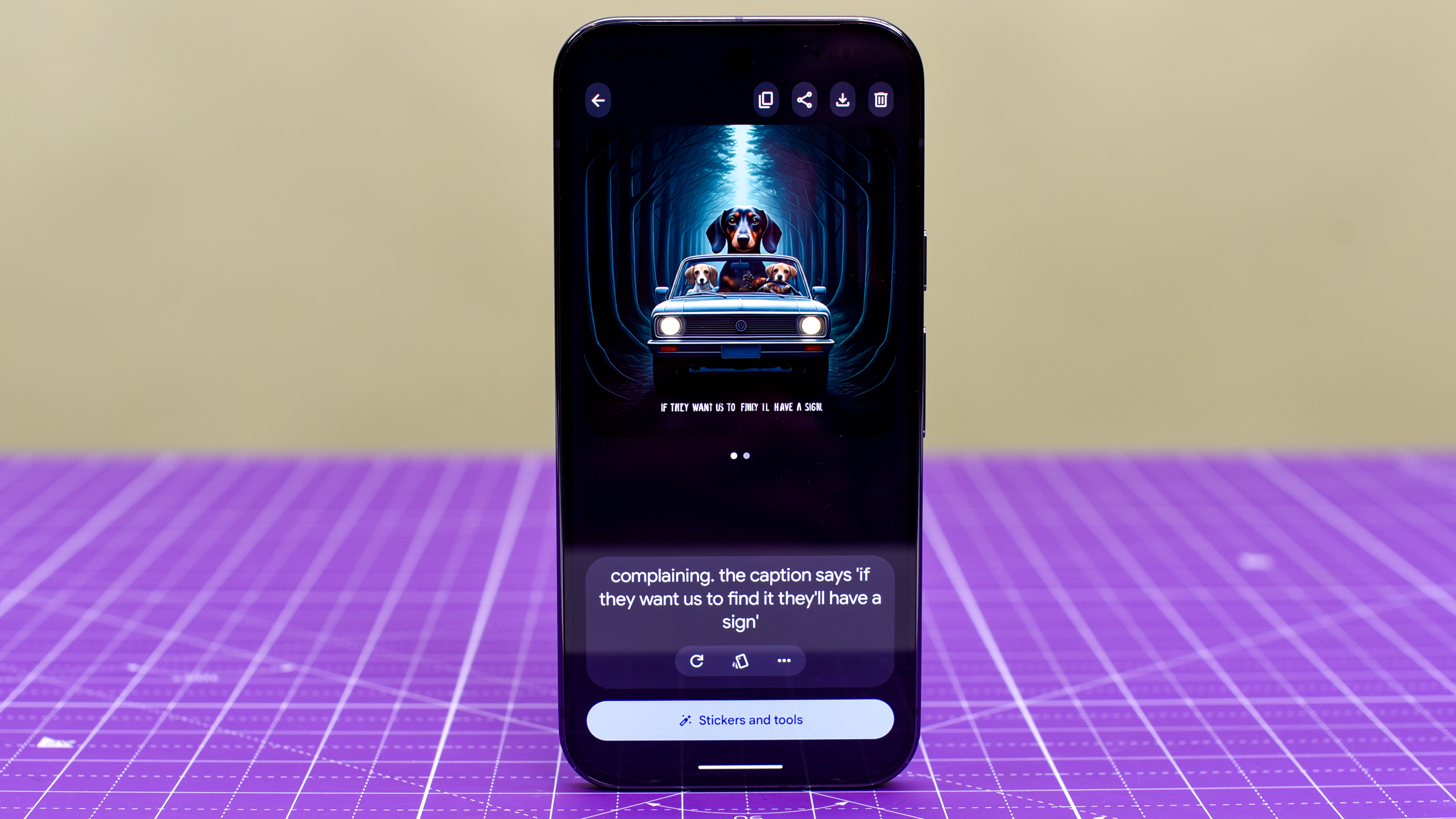
- Google pushes its AI to the limits, but doesn’t cross any red lines
- Some features are amazing, some are useless, some feel weird
Before I get to all of the AI features on the Pixel 9 Pro, I’ll talk about the rest of the phone, and whether you must engage with AI to enjoy the Pixel 9 Pro. Google keeps a simple, elegant version of Android on its Pixel phones; the interface is clean and easy to understand, and doesn’t have too many hidden shortcuts, or strange pop-up windows, or unique gestures that you need to learn. In fact, Google has taken more away from Android in recent years than it seems to have added, at least up top, on the home screens.
The Settings menu still grows needlessly complicated, with too many features shoved into corners and long lists of meaningless tech jargon. Surprisingly, Samsung does a much better job of turning its phone controls over to its Bixby AI. On my Samsung I can ask Bixby to do just about anything the phone can do, but on the Pixel 9 Pro, Gemini can be hit or miss when it comes to the phone features it can toggle.

Things aren’t as bad as you may have heard, though. Google Gemini can set a timer, just not from Gemini Live, the new conversational AI mode. It can toggle the Wi-Fi hotspot and turn on the flashlight, among other settings. It can adjust my home thermostat and get me local search results from Google Maps. It couldn’t do any of these things a few months ago when it launched.
Is Google Gemini ready to replace Google Assistant? Sure, why not? I don’t think many people relied on Google Assistant as the most valuable feature of their phone, but it’s possible that some day Gemini could be the part of your Pixel you use the most.
Gemini Live will be a stepping stone to this future. This is the new conversational AI built into Google Gemini Advanced. It isn’t easy to find, though – you can’t just press a button and start a conversation with Gemini. You have to open Gemini, then tap a small button near the text box. Then the chat begins.
Talking back and forth with Gemini was surprisingly natural, if I was patient – that’s because the time delay between responses is still very long. If a human responded this slowly I would think that I’d had a bad phone connection. When Gemini Live does respond, though, the responses are excellent. The voice is immaculate, not at all robotic. The content it provides is useful and measured, depending on what you ask.
Talking to Gemini Live is like talking to a polite friend who’s noncommittal and doesn’t want anybody to get into trouble. Its personal advice is cautious, with disclaimers and warnings. It makes suggestions that are often inaccurate. I asked for a good place to take my dog where we could see wildflowers and it suggested spots that were decidedly not dog-friendly. I asked for an interesting local date night and it suggested a scenic railroad dinner tour… that closed 20 years ago.
Worst of all, Gemini Live simply failed during every conversation – after a few minutes it just quit talking.
Some of the AI features are very good, often when the Pixel 9 Pro is taking transcription. The Pixel Recorder is the best voice recorder I’ve ever used, and I’ve been a journalist for decades. The new Call Notes feature is also clever and useful. I might complain about privacy, but the Pixel 9 Pro announces itself loudly to everybody on the call before it starts listening and taking notes.
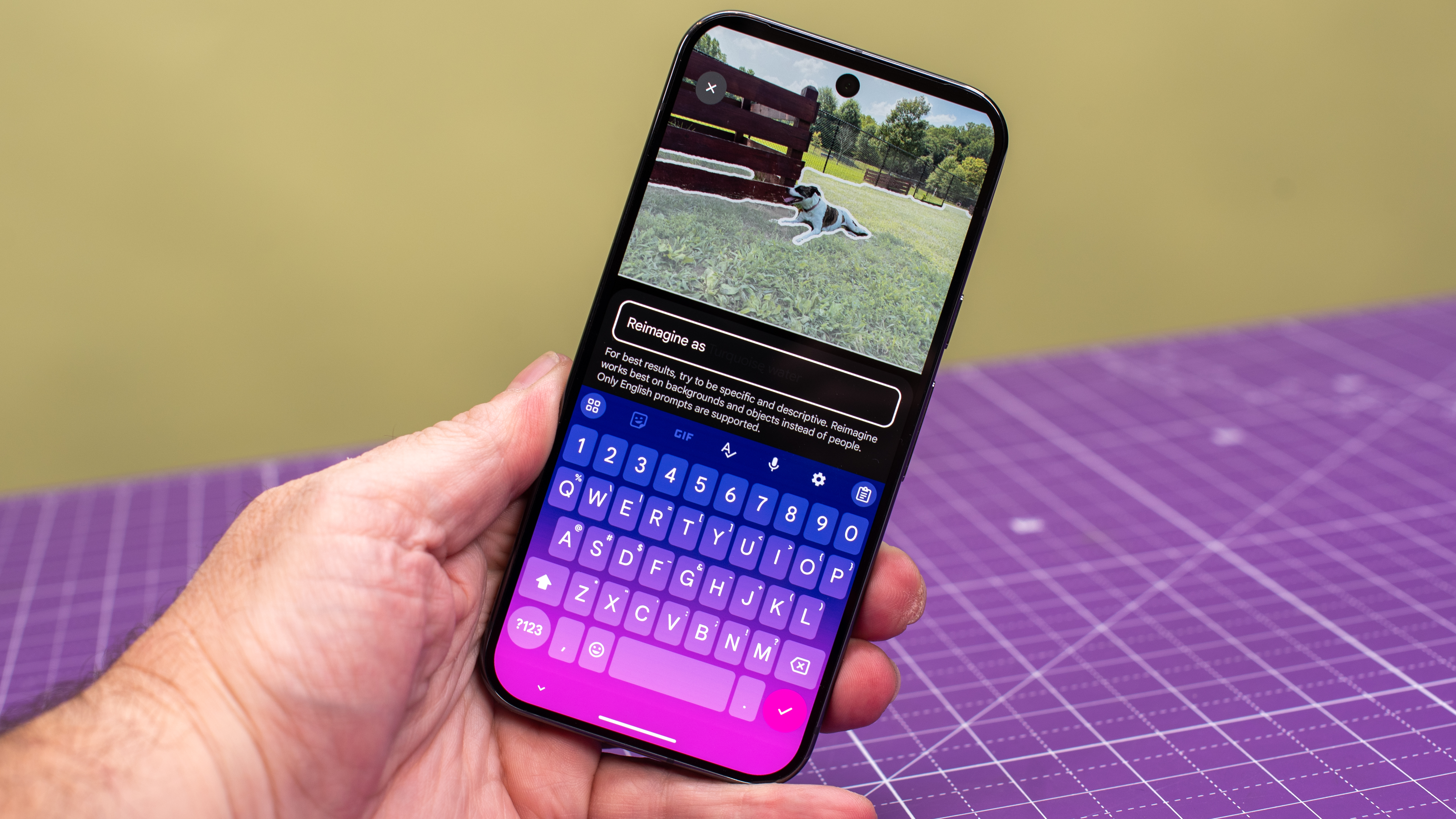
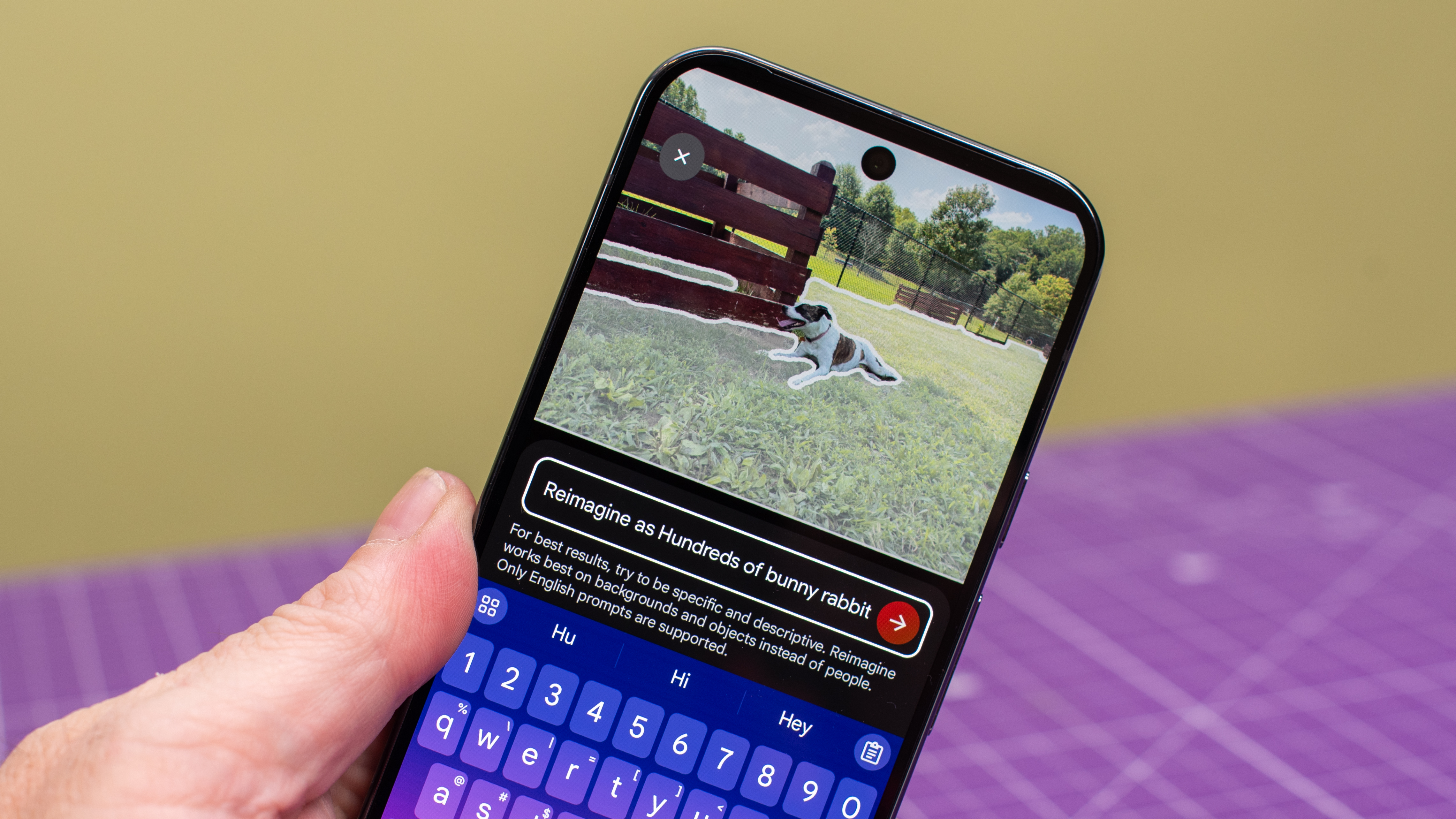
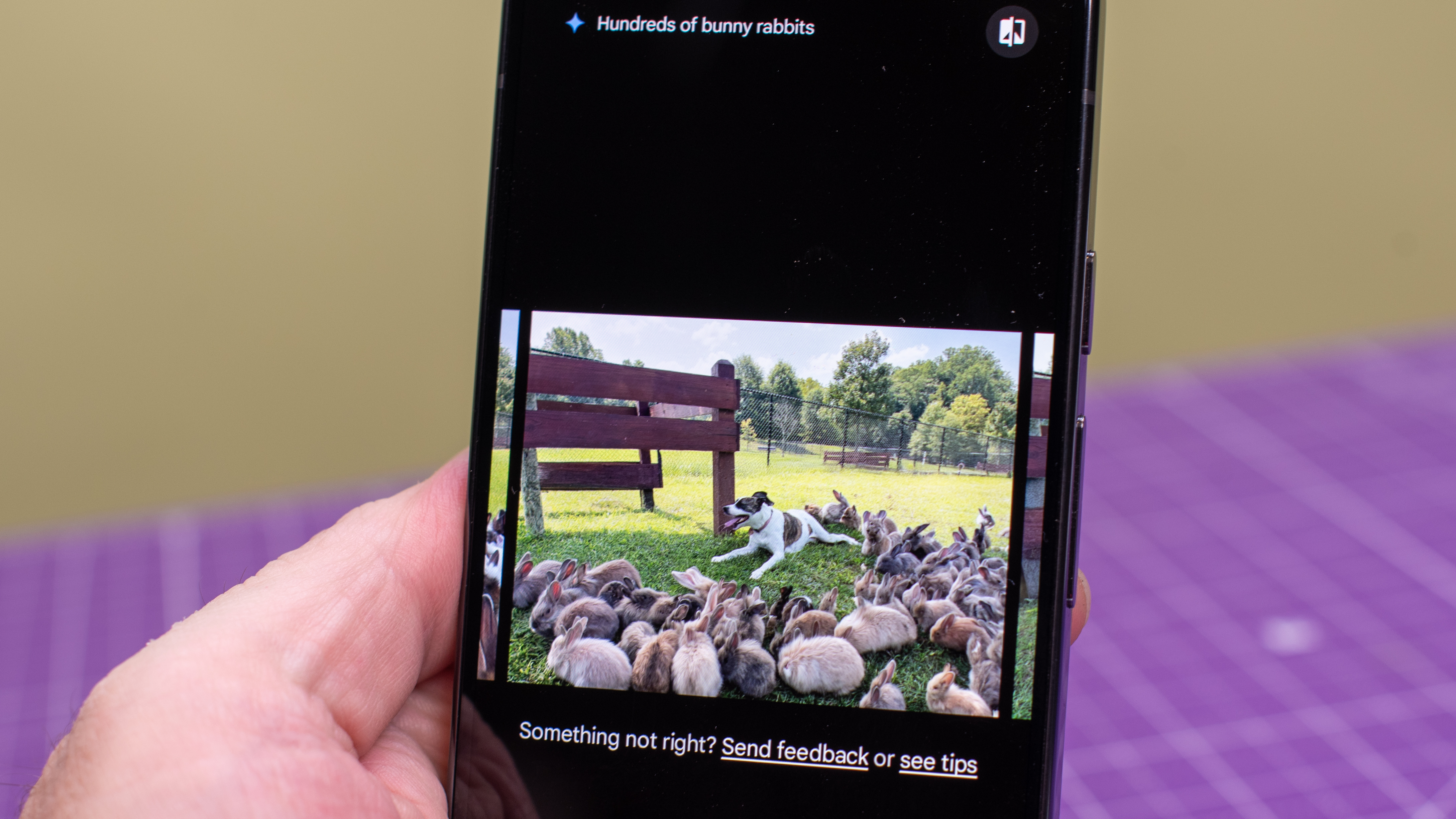
Even the photo features are surprisingly good, if you can get past the ick factor. The Add Me camera mode is amazing. You can add yourself to a group photo after the shot was taken. The result looks perfect, like you were there. Bodies don’t overlap in weird ways, and the phone even gets shadows and lighting right.
The new Reimagine tool in the Magic Editor actually does a great job of changing photos to add new elements. You can add a herd of bunnies to your picnic, or a waterfall beneath your feet, and the end results are incredibly good. Are they real photos? No, but if you approach them with creativity and with tongue firmly planted in cheek, they can be fun and unique.
I even like Google’s AI image-generation tool, Pixel Studio. Google has wisely chosen to forbid its tool from making images with humans; it can make robots, and it can anthropomorphize animals into human poses, but it won’t make an actual human being. Amen. I’m so tired of image generators producing stereotypical people. Better to just avoid the topic, and let humans be creative without placing other humans in the picture.
Google Pixel 9 Pro review: Cameras

- Amazing image quality with versatile camera features and editing
- Settings can be very difficult, making it harder to use key features
Without question, the Google Pixel 9 Pro is a contender for the top spot on our list of the best camera phones you can buy. The image quality is excellent, and not just from the main camera, or the primary Photo mode. Google has made worthy improvements across the board to many different camera features.
The new night-time panorama mode is a game changer if you enjoy panoramic shots. Other phones don’t come close; they hardly try. The Pixel 9 Pro can take real panorama photos at night, and I’m excited to try this in every city I visit.
Google says its video modes have gotten a serious boost, but I didn’t test these features. I assumed, incorrectly, that Video Boost would be active by default. In fact, it’s hidden under a special video settings menu that’s only available when you have the video camera active. If you don’t go into video mode and enable Video Boost, you’ll never take advantage of Google’s AI improvements to your video fidelity.

The same is true for Super Res video. If you haven’t enabled the Video Boost feature, which as mentioned is turned off by default, you’ll never see the new Super Res video feature in action.
For most photographs, though, the Pixel 9 Pro did a fantastic job, and was equal in quality to my iPhone 15 Pro Max, if not better in some cases. The Pixel 9 Pro had less of a problem with lens flare, which is caused when strong sunlight hits the lens and smears the image with bright artifacts. That’s a win for the camera bar, in my opinion.
The Pixel 9 Pro also handled colors perfectly, where the iPhone 15 Pro Max would create photos with cooler tones than I saw in reality. For the night panorama, it isn’t even a contest. The iPhone gave me a black bar instead of a photo, while the Pixel 9 Pro gave me a clear panorama.
If you’re considering the Pixel 9 because you heard (from me!) that it has the exact same main camera and ultrawide camera as the Pixel 9 Pro, you may still want to pay more for the Pro Pixel. The Pixel 9 Pro has a Pro mode in the Camera app that the Pixel 9 lacks. That gives you access to full 50MP photos, while the Pixel 9 only produces 12MP images.
In fact, there are a number of Camera app advantages the Pixel 9 Pro has over the Pixel 9, thanks to more advanced software and AI. The Pixel 9 Pro can shoot videos in 8K resolution, while the Pixel 9 is limited to 4K videos. You can also enable Video Boost on the Pixel 9 Pro, but not the Pixel 9, and that includes the new Super Res Zoom Video feature.
The Pixel 9 Pro also just made better choices than the Pixel 9 in a given situation. In macro photos, the Pixel 9 Pro gave me better bokeh and depth, isolating my subject nicely. The brighter display also makes the Pixel 9 Pro just that much easier to use for photos in bright sunlight (which is surely how I overheated my phone).
Google Pixel 9 Pro review: Camera samples




















Google Pixel 9 Pro review: Performance
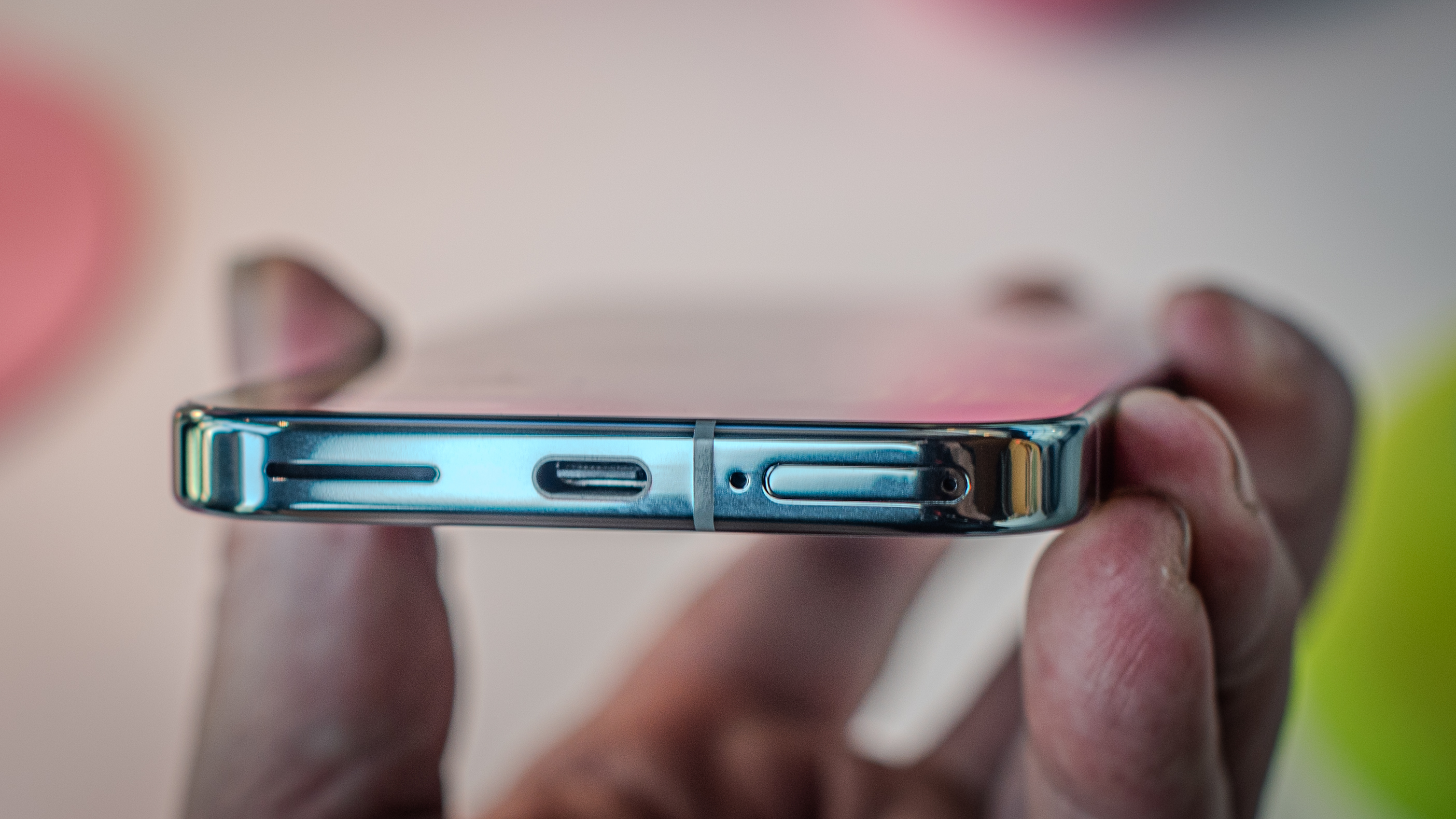
- If you were worried about Tensor G4 performance, you were right
- Will this phone really last through seven years of updates?
Does performance matter on the best phones today? If you simply look at processor cores, which is like comparing car engine cylinders, the Pixel 9 Pro appears to use a slower engine than Galaxy S24 or Apple iPhone 15. How much slower? Quite a bit, actually.
In our Future Labs benchmark tests, the Pixel 9 Pro results were abysmal. On the Geekbench Multicore test, which runs all of the processing cores together, the Pixel 9 Pro averaged a score under 4,800. The Galaxy S24, with its Qualcomm Snapdragon 8 Gen 3 for Galaxy chipset, averaged more than 6,900. That’s a massive difference.
We saw similar deficits between the Tensor G4 and the latest Snapdragon and Apple A17 Pro chipsets when it came to gaming, video processing, and every other performance benchmark test. The big problem is that those benchmark scores correlate to my experience in the real world. The Pixel 9 Pro is slow. It can’t handle a heavy workload.
There was no single task that choked the Pixel 9 Pro, but when I had multiple apps running together, things got sticky. If I had Spotify playing music, Waze navigating the roads, and Gemini giving me life advice, all at the same time, I could watch the Pixel 9 Pro freeze completely. Buttons on-screen simply stopped responding. I couldn’t scroll my music playlist. The music kept playing, but the screen stalled for a few seconds. Not moments, actual seconds – one one-thousand, two one-thousand…
I’m not sure what’s happening, and I hope these are software problems that get smoothed out over time. The Pixel 9 Pro has an obscene amount of RAM; where is it all going if the phone can’t multitask? I’d hoped that 16GB of RAM would make the Pixel 9 Pro future-proof, but now I’m a bit worried the phone isn’t today-proof.
Additionally, my Pixel 9 Pro overheated the first time I took it out to take photos on a sunny day. It wasn’t hot, it was only 79F / 26C, and it had just rained, so the weather was a bit cool, not too humid. I was using the Pixel 9, iPhone 15 Pro Max, and Pixel 9 Pro, with the same settings on each camera. The screens were all set to maximum brightness. The Pixel 9 Pro complained within minutes, and forced the camera resolution lower. Neither the Pixel 9 nor the iPhone had any trouble.
Google Pixel 9 Pro review: Battery
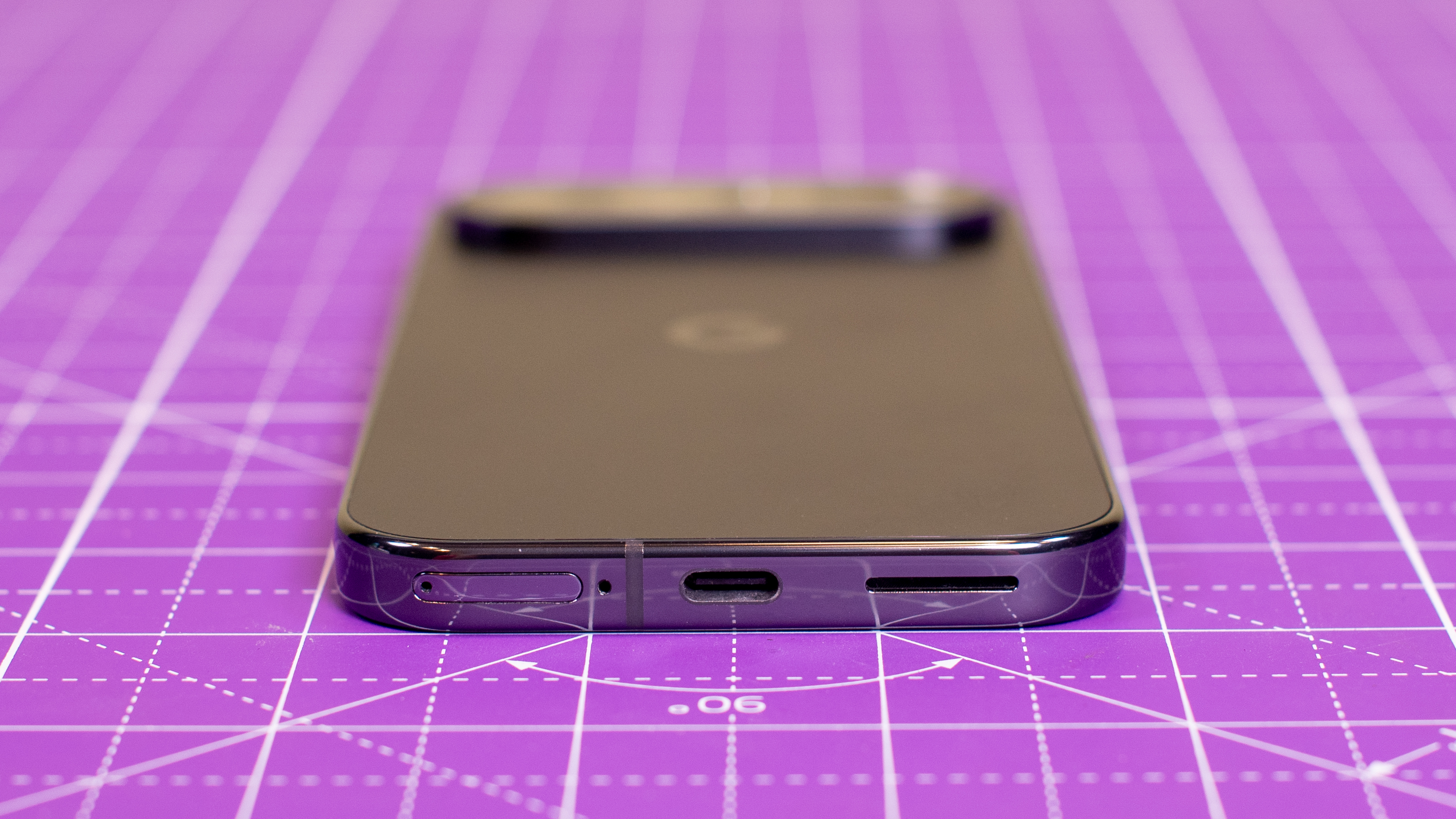
- Fast charging meets Google’s promises
- Could be faster still, compared to the competition
In my real world testing, battery life was no problem, and the Pixel 9 Pro lasted all day on a normal day of use. I never had to charge the phone before bed time unless I used the camera extensively, which I did a few times during my testing period. The camera drains the battery fast, especially in bright sunlight with the screen brightness cranked all the way up.
We got more than 13 hours and 15 minutes of battery life in our rundown test with the Pixel 9 Pro. This phone has better battery life than the iPhone 15 Pro, which is a similarly-sized phone. The Samsung Galaxy S24 lasted a half-hour longer in our tests, but that still makes the Pixel 9 Pro a respectable competitor.
At least the Pixel 9 Pro charges faster than before. Google says the Pixel 9 Pro is the fastest-charging Pixel phone ever. Oh, wait, that’s the Pixel 9 Pro XL, with its other very subtle advantage over the Pixel 9 Pro. The Pixel 9 Pro still wins with better battery life than its larger XL sibling. I’m guessing that the bigger display simply requires more power, and that’s why the Pixel 9 Pro got 13.5 hours of battery in our rundown tests, while the Pixel 9 Pro XL couldn’t last more than 13 hours in the same test.
Google says you can use a 45W charger to get better charging speeds. I’m not so sure. I definitely saw the 45W charger make a difference when charging the Pixel 9 Pro XL, but the Pixel 9 Pro did not seem to charge any faster with a 45W charger than it did with a 25W charger. I asked Google to clarify, and they confirmed that this was the case.
If you plug a Pixel 9 Pro into a 45W charger, it will charge at… 27W?! So, it won’t come close to charging at full speed. The Pixel 9 Pro XL can manage 37W, which is why it’s the fastest-charging Pixel ever. Even with a larger battery inside, it charges to full faster than the Pixel 9 Pro.
Charging wattage weirdness aside, you can believe Google’s charging claims. It says the Pixel 9 Pro charges to 55% in 30 minutes and that’s exactly the result I saw.
Should you buy the Google Pixel 9 Pro?
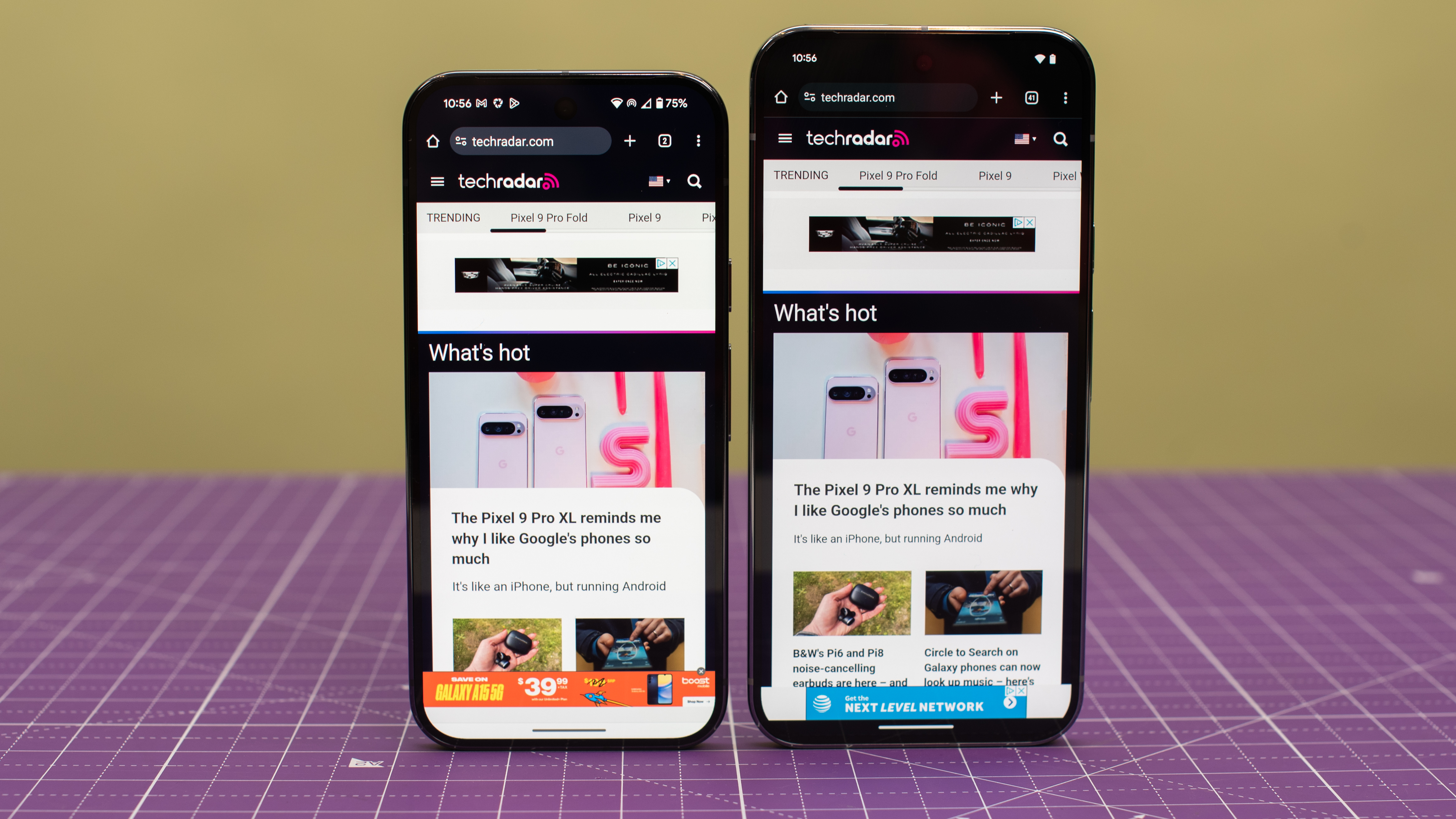
| Attributes | Notes | Rating |
|---|---|---|
| Value | It’s a great phone all around, but performance lags significantly versus other phones in this price range, so maybe wait for a discount or a bundle deal. | 4 / 5 |
| Design | Excellent new design; the biggest change to Pixel phones in four years. Fantastic materials and a more modern look. | 5 / 5 |
| Display | Google offers the best smartphone screens around on the Pixel 9 Pro, and it’s surprising the company doesn’t crow louder. Super-bright – be careful to not overheat. | 5 / 5 |
| Software | With a grain of salt and a sense of humor, the AI stuff is A-Okay. Google avoids bad AI stereotypes, and gives us a nice glimpse of the future for mobile AI. | 4 / 5 |
| Camera | Fantastic cameras rival the best camera phones you can buy. Great new features, including Add Me for AI group photos. Camera settings are too difficult to manage. | 5 / 5 |
| Performance | Performance lags significantly, both in benchmark testing and the real world. This phone lags if you push too hard, and Google wants you to push too hard. Seven years ahead? We’ll see. | 3 / 5 |
| Battery | Solid battery life beats the iPhone, and the phone has no trouble lasting all day. You’ll want to use the cameras, so pack an extra charger, but if you’re careful this phone lasts no problem. I wish the charging was as fast as Google makes it seem. | 4 / 5 |
Buy it if...
You like the look of the new Pixel
The Pixel 9 Pro has a great new look and feel that really delivers on the premium smartphone experience. You’ll have a love-hate relationship with the case you’ll buy to protect it.
You want great photos, both real and unreal
Do you want to take great photos or do you want to create cool images? The Pixel 9 Pro does both. You can take the best pics, then change them with AI.
You’ve always wanted to talk to a computer
With Gemini Live, you can have a real conversation with your phone. It doesn’t do a great job at making recommendations, but it’s good at just chatting.
Don't buy it if...
You care that new iPhones are coming very soon
If you’re aware that Apple launches a new iPhone like clockwork in September, then maybe you should wait to see what this year brings.
You like to save a little money around the holidays
I have a strong feeling that this phone will get a discount towards the end of the year, just like the Pixel 8 Pro and Pixel 7 Pro before. Wait a little and you may save a lot.
Google Pixel 9 Pro review: Also consider
Google Pixel 9
The Google Pixel 9 has most of the same cameras as the Pixel 9 Pro, with the same Tensor G4 chipset inside for all those AI features, including Gemini Live.
Samsung Galaxy S24
The Galaxy S24 offers far superior performance, if you need to multitask, get a lot of work done, or just play hardcore mobile games. It also has slightly better battery life.
| Google Pixel 9 Pro | Google Pixel 9 | Samsung Galaxy S24 | |
|---|---|---|---|
| Price (at launch): | $999 / £999 / AU $1,699 | $799 / £799 / AU$1,349 | $799.99 / £699 / AU $1,399 |
| Display | 6.3-inch Super Actua | 6.3-inch Actua | 6.2-inch Dynamic AMOLED |
| Cameras | 50MP main; 48MP ultra-wide; 48MP 5x telephoto | 50MP main; 48MP ultra-wide | 50MP main; 12MP ultra-wide; 10MP 3x telephoto |
| Processor | Google Tensor G4 | Google Tensor G4 | Qualcomm Snapdragon 8 Gen 3 for Galaxy |
| Battery | 4,700mAh | 4,700mAh | 4,000 mAh |
How I tested the Google Pixel 9 Pro
I received the Pixel 9 Pro from Google and spent one week with the phone before writing this review. Another Pixel 9 Pro was also tested by Future Labs for benchmark and lab tests. I used the Pixel 9 Pro as my primary work phone, testing every feature, including calling and Call Notes, messaging, and web browsing. I also played games, listened to music, and played more games.
I used the Pixel 9 Pro in my car for music and navigation, using Bluetooth and Android Auto. I also used the Pixel 9 Pro with a number of accessories, including the Pixel Buds Pro, Pixel Watch 2, Meta Ray Ban smart glasses, and other Bluetooth devices. I streamed video to my Google Chromecast connected to my TV.
I tested the Google Pixel 9 Pro cameras alongside a Pixel 9 and Apple iPhone 15 Pro Max, taking photos under the exact same conditions and comparing results. For each camera, I used the mode that produced the highest-resolution image with the best image quality, and compared the full-size images on a professional Dell monitor.
Future Labs tests phones using a mix of third-party benchmark software and proprietary, real-world tests. We use Geekbench, CrossMark, JetStream, WebXPRT and Mobile XPRT, and 3DMark for performance testing. We test a phone's performance on tasks using Adobe Premiere Rush. We also measure display color output and brightness.
For battery testing, we have proprietary rundown tests that are the same for every phone, and we determine how long it takes for the battery to run down.
☑️ 100s of smartphones reviewed
☑️ 15 years of product testing
☑️ Over 16,000 products reviewed in total
☑️ Nearly 200,000 hours testing tech
First reviewed August 2024

Phil Berne is a preeminent voice in consumer electronics reviews, starting more than 20 years ago at eTown.com. Phil has written for Engadget, The Verge, PC Mag, Digital Trends, Slashgear, TechRadar, AndroidCentral, and was Editor-in-Chief of the sadly-defunct infoSync. Phil holds an entirely useful M.A. in Cultural Theory from Carnegie Mellon University. He sang in numerous college a cappella groups.
Phil did a stint at Samsung Mobile, leading reviews for the PR team and writing crisis communications until he left in 2017. He worked at an Apple Store near Boston, MA, at the height of iPod popularity. Phil is certified in Google AI Essentials. He has a High School English teaching license (and years of teaching experience) and is a Red Cross certified Lifeguard. His passion is the democratizing power of mobile technology. Before AI came along he was totally sure the next big thing would be something we wear on our faces.
